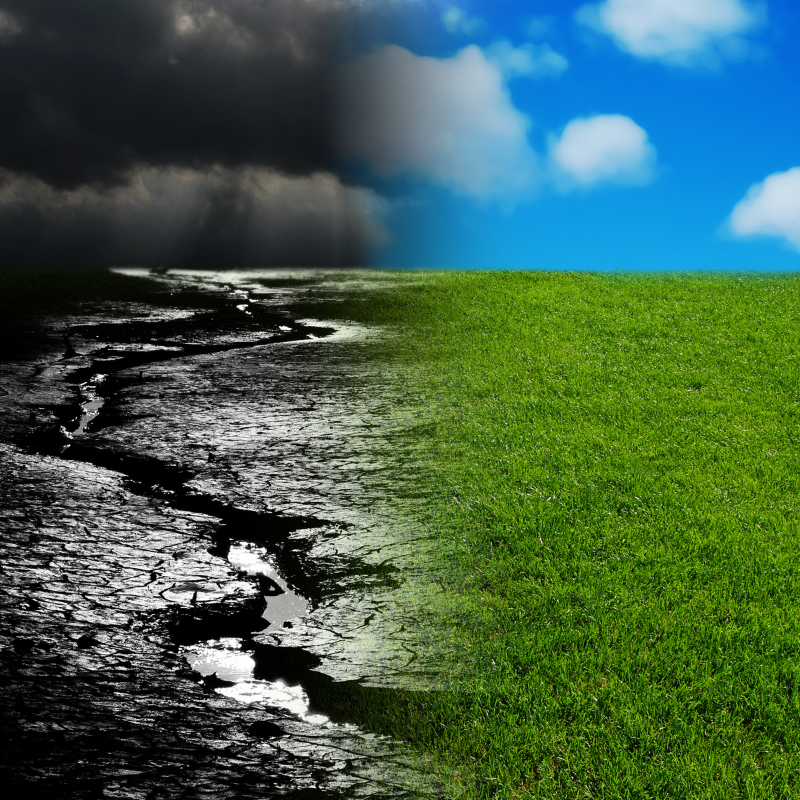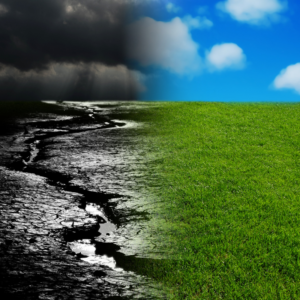Climate change is a growing threat to biodiversity and food security. Rising temperatures, extreme weather events, and shifting rainfall patterns destabilize ecosystems.
Species are being forced to migrate, adapt, or face extinction. At the same time, food systems are becoming increasingly fragile.
Protecting biodiversity is essential, as it directly supports agricultural resilience, dietary diversity, and ecosystem services like pollination and soil fertility.
Why Biodiversity Is Key To Food Security

Biodiversity is the backbone of healthy ecosystems and sustainable food production. It contributes to essential processes like soil health, pest control, pollination, and nutrient cycling.
These processes ensure crops grow efficiently and provide the food we rely on daily.
The Essential Role Of Biodiversity In Food Systems
- Soil Health: Microorganisms in biodiverse soils release nutrients, improve structure, and help retain water. This makes the soil fertile and reduces the risk of erosion.
- Pollination: Bees, butterflies, and birds ensure that crops like fruits, vegetables, and nuts thrive. Without them, yields drop significantly.
- Pest Control: Natural predators such as birds and insects keep harmful pests under control, reducing the need for chemical pesticides.
- Genetic Diversity: Variations in crops and livestock allow them to adapt to extreme conditions like droughts, floods, and new pests. This resilience is vital in a changing climate.
- Biodiversity also ensures food variety and nutrition. Diverse species in food systems provide essential micronutrients, keeping diets balanced and healthy. A decline in biodiversity, however, jeopardizes these critical functions.
How Climate Change Threatens Biodiversity And Food Security
- Habitat Loss and Species Extinction: Climate change drives species to migrate to survive. However, many cannot adapt quickly enough to changing conditions. Coral reefs bleach and die due to warming oceans, forests shrink from fires and deforestation, and wetlands dry out. These losses have far-reaching consequences.
Example: Species are moving to higher elevations at an average rate of 11 meters per decade, altering entire ecosystems.
- Soil Degradation: Frequent floods and prolonged droughts degrade soil quality. Topsoil is washed away, while dry conditions compact the ground, making it less fertile. Poor soil health directly reduces crop yields.
Case Study: The UK saw its second-lowest yield for arable crops in 2024 due to flooding and degraded soil.
- Declining Pollinator Populations: Pollinators like bees and butterflies are essential for crop production. However, their populations are collapsing due to habitat destruction, pesticide use, and climate change. Farmers resort to hand-pollination in some areas, which is costly and inefficient.
- Increased Reliance on Monocultures: Farmers turn to monoculture farming as biodiversity decreases, growing a single crop over large areas. This makes farms more vulnerable to pests, diseases, and extreme weather. Monocultures also deplete soil nutrients and increase dependence on chemical fertilizers and pesticides, harming biodiversity.
How Food Production Contributes To Biodiversity Loss
While biodiversity is essential for agriculture, modern farming practices are among the leading causes of biodiversity decline.
- Pesticide Use: Pesticides kill pests but harm non-target species like beneficial insects, plants, and soil organisms.
- Overploughing: Excessive plowing damages soil structure, reduces water retention capacity, and disrupts the habitat of underground organisms.
- Agricultural Expansion: Converting forests, wetlands, and grasslands into farmland destroys habitats. This practice threatens 85% of species currently at risk of extinction.
These practices create a vicious cycle. Degraded ecosystems produce lower yields, pushing farmers to expand farmland further and exacerbating biodiversity loss.
The Impact Of Biodiversity Loss On Food Security
- Vulnerability to Pests and Diseases: Reduced biodiversity means fewer natural predators to control pests. Outbreaks spread rapidly, causing significant crop losses. A single pest outbreak can devastate entire food supplies, leading to shortages and higher prices.
- Declining Crop Yields: Monoculture farming and poor soil health reduce yields. Crops grown in degraded soil are less nutritious and more susceptible to extreme weather.
- Loss of Nutritional Diversity: Fewer species in the food system result in less dietary variety. This leads to nutritional deficiencies and increased malnutrition, especially in vulnerable populations.
Solutions To Protect Biodiversity And Food Security
To protect biodiversity and food security, sustainable practices and teamwork are vital. Here’s how we can achieve it:
Regenerative agriculture focuses on healthier soil, conserving water, and boosting biodiversity.
Farmers can plant pollinator strips and hedgerows, rotate crops to keep the soil rich, and limit chemicals and deep plowing to protect the land.
Protecting natural habitats like wetlands, forests, and grasslands is crucial. These areas clean our water, prevent floods, and store carbon, making them essential for a balanced environment.
Indigenous communities have always practiced sustainable farming that supports biodiversity.
Learning from and promoting these methods can help safeguard ecosystems and ensure better food security for everyone.
Another key step is reducing food waste. About one-third of all food goes to waste. By wasting less, we can use fewer resources like land and water, easing the strain on our environment.
Role Of Policies And Global Action

Strong policies are essential to address biodiversity loss and food insecurity.
Governments play a vital role by supporting sustainable farming through subsidies and incentives, enforcing laws to protect endangered species and habitats, and investing in research on climate-resilient crops and farming methods.
Global frameworks like the Kunming-Montreal Framework highlight the critical importance of biodiversity for sustainable development.
However, actions must be accelerated to achieve these goals and ensure a secure future for ecosystems and food systems.
Conclusion: A Shared Responsibility
Climate change profoundly impacts biodiversity and food security. As ecosystems degrade, food systems become less reliable, putting millions at risk of hunger.
Protecting biodiversity is not just about saving species—it’s about ensuring a secure and sustainable food supply for future generations.
Every individual has a role to play. Farmers, policymakers, and consumers must adopt practices that conserve biodiversity and strengthen food systems. Together, we can create a world where biodiversity thrives, and food security is guaranteed.
“Step outside and see how biodiversity supports life. Protect our planet by supporting sustainable farming and reducing food waste. Advocate for policies that secure both nature and our food systems. Together, we can ensure a thriving world for all. Start making a difference today!”










